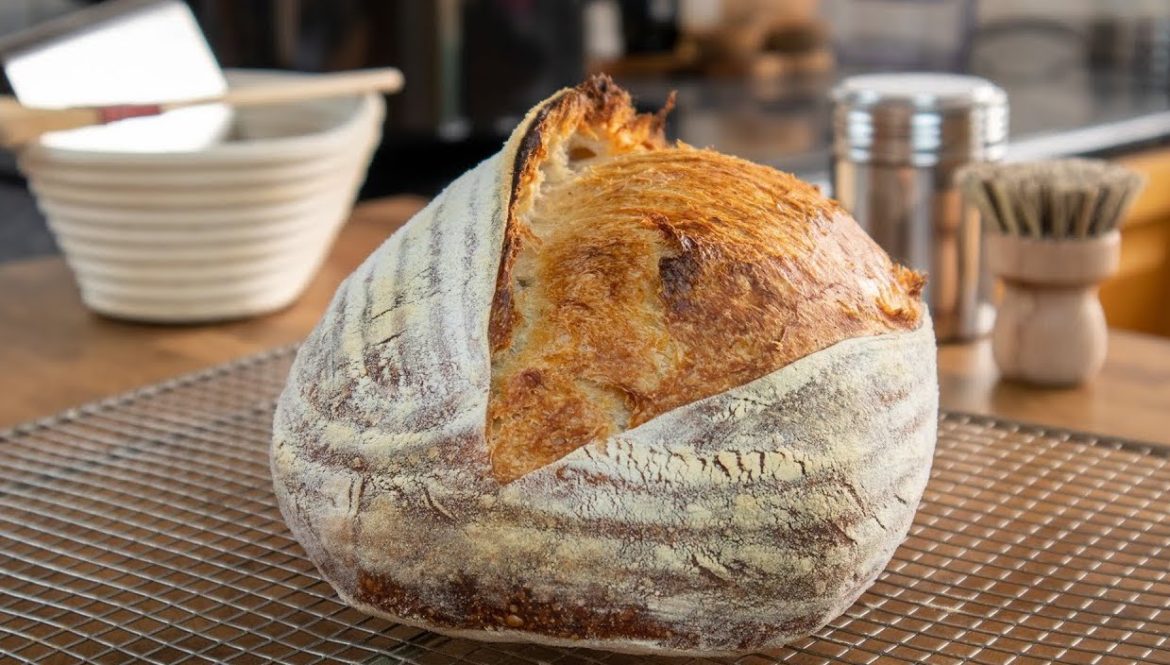An outstanding basic no kneed sourdough bread recipe that produces amazing results consistently. This is a “bare bones” recipe to help new bakers understand the process and get to grips with their first loaf without worrying about too much technique.
Basic No Knead Recipe That Gives Amazing Results Every Time
There is no kneading as time will build the gluten network. There is also no reason to keep folding this dough. The final hydration is 71% and makes for a very manageable bread dough. Please note that dependant on the flour you use the “stickiness” my vary.
I am using a13.2% protein white wheat flour. It is not organic. I want to demonstrate that you do not need speciality or organic flours to produce an excellent loaf. This particular brand of flour is described as “all purpose” and to save any confusion I have been specific about the protein content. “Strong” flour would be more descriptive.
My kitchen temp was in the region of 16-18c.
My starter is fed at a ratio of 1:1:1 (Starter / water / flour) and therefore remains at 100% hydration making future recipe calculation easy. The flour is divided into 75% white flour and 25% wholewheat flour. Again, if you have any questions let me know in the comments.
The most important part of this process is making sure you have an active and well fed starter, the rest is straightforward and uncomplicated.
I bake three to four times a week at home and this is my go to recipe as it fits in so well with my work and family schedule!
My banneton size: 25cm across the top length, 15cm across the top width, 8cm deep. This was advertised as 500g banneton but for my use I find 750g works best. My recipe works out to 762g which fits perfectly!
Scheduling:
You can use the fridge to put the “brakes” on your baking schedule. For example, you could mix your dough at 17.00 and complete through to the end of the bulk ferment before going to bed at 23.00. In this case you could cover your dough well, I normally use a plastic supermarket bag, and then pop it in the fridge overnight. The next day you would let the dough come back to room temperature and the shape and place in the proofing basket.
You can also refrigerate the dough while it is in the proofing basket and hold it overnight. Just remember that you will need to flour your basket very well as the dough may have more of a tendency to stick.
It’s also common practice to finish the final hour of the proof in the basket in the fridge just to firm up the dough before baking.
You can bake your dough directly from the fridge with excellent results. There is no need to let it come back to room temperature.
The longer you proof your dough at room temperature or in the fridge the more sour notes will develop.
If you have any questions about the baking schedule please let me know in the comments and I will be happy to answer.
Ingredients:
This will make 750g of dough which works perfectly with my proofing basket. The hydration of the dough is 71%
- 128g Active starter (100% hydration)
- 247g Water
- 375g Flour
- 12g Sea salt



2 comments
Hi there can you please do step by step your starter? Thank you.
Can you please illustrate how to get the starter going. Thank you